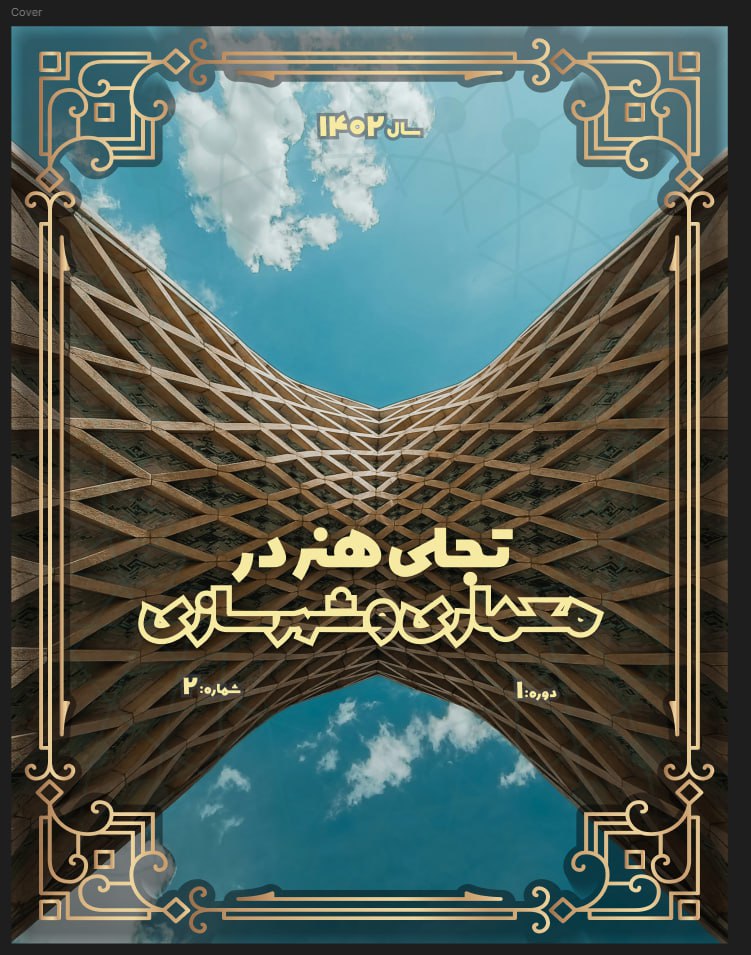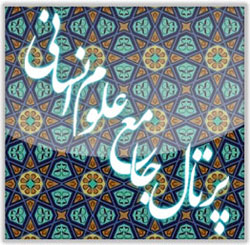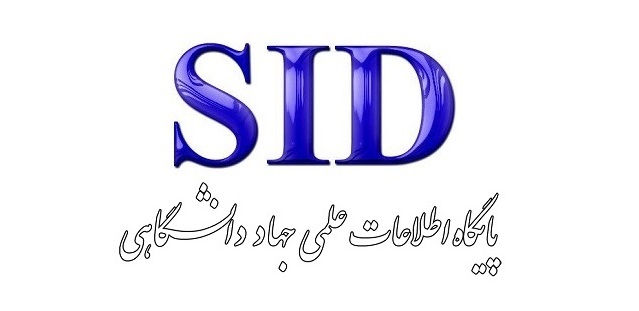اخلاق از دیدگاه ابن مسکویه و نقش آن در سیر تاریخی تعزیه
کلمات کلیدی:
ابن مسکویه, تعزیه, مناسک آیینی, فضائل اخلاقیچکیده
اندیشه و نظریات ابن مسکویه سهمی مهم در مبانی نظری فرهنگ و تمدن اسلامی دارد، بخش مهمی از مبانی فکری و نظری او را میتوان در سیر تاریخی تعزیه از طریق تحلیل متنی مفاهیم و مؤلفههایی که در این خصوص بیان کرده، شناخت. تحلیل تاریخی تعزیه میتواند زوایای مهمی از اندیشه ابن مسکویه را که در پس معنای ظاهری و آشکار مفاهیم و واژگان کلیدی نهفته است، نمایان سازد. یافتهها نشان میدهند که افراد در طی مراسم محرم، از زندگی فردگرایانه روزمره خود خارج شده و به جهان اجتماعی و وجدان جمعی پیوندی مجدد مییابند (زرچینی، 1395) و به همین دلیل همبستگی اجتماعی و اقتدار اخلاقی را که با این مناسک عجین است، تقویت و بازتولید میکند. شرکت در مراسم عزاداری محرم، حس تعلق به یک هویت جمعی و تمایز اجتماعی را در افراد ایجاد کرده و با کنار گذاشتن فردیت خود، آنها را به وجدان جمعی متصل میکند. این امر به ویژه در دهه اول محرم مشهود است، زمانی که آزادگی و آزاداندیشی الهام گرفته از حماسه عاشورا در سراسر ایران اسلامی به نمایش گذاشته میشود.
دانلودها
مراجع
1. Miskawayh AiM. Tahdhīb al-Akhlāq wa Taṭhīr al-A'rāq. Edited by 'E. Hellāli ed: Tali'ah al-Nur; 2005.
2. Ya'qubi AiI. Tārīkh-e Ya'qūbī, Vol. 2 (Ya'qubi's History, Vol. 2). Translated by M. I. Āyati ed. Tehran: Elmi va Farhangi Publications; 2010.
3. Khazzaz Qomi Razi AQAiMiA. Kifayat al-Athar (Sufficiency of Traditions). Edited by S. A. Hosseini Kouhkamari ed. Qom: Bidar; 1981.
4. Bolookbashi A. Ta'ziyeh-khani: Adaptation and Incompatibility with the Cultural Structure of Society. Social Sciences Letter. 1998(11):31-41.
5. Bolookbashi A. Ta'ziyeh-khani: The Sacred Narrative of Misfortunes in Ritualistic Performance. Tehran: Amir Kabir; 2004.
6. Bolookbashi A. Nakhlistan: Allegorical Display of the Eternal Life of the Martyrs. Tehran: Cultural Research Bureau; 2004.
7. Bolookbashi A. The Social, Cultural, and Artistic Role and Function of Ta'ziyeh-khani in Traditional Iranian Society. Isfahan School Gathering, in the Collection of Performance Articles: Academy of Arts Publications; 2007.
8. Moghaddam P. Ta'ziyeh Center (Tehran Ta'ziyeh House): Islamic Azad University, Central Tehran Branch, Faculty of Art and Architecture; 2013.
9. Panahi F. A Comparative Study of Seneca's "Thyestes" and the "Story of Zahhak" from the Perspective of Theatrical Violence: Tarbiat Modares University, Faculty of Art; 2010.
10. Darikvand M. Investigating Social Factors Affecting the Tendency Towards the Popification of Lamentation (Nowheh) (Case Study: Views of Male Mourners in Khorramabad City Mourning Groups in 2015-2016): Ayatollah al-Uzma Boroujerdi University (r.a.), Faculty of Humanities; 2016.
11. Hosseini O. Investigating the Role of Traditional Civil Society on the Performance of Parties in Iran - The Era of the Islamic Republic of Iran: Ferdowsi University of Mashhad, Faculty of Administrative Sciences; 2016.
12. Bayza'i B. Performance in Iran. Tehran: Rowshangaran Publications; 2000.
13. Chelkowski PJ. Ta'ziyeh: Ritual and Performance in Iran. Translated by D. Hatami ed. Tehran: SAMT (Organization for Studying and Compiling University Humanities Books); 2005.
14. Alizadeh Moghadam AA. Conceptual Analysis of the Hero in Shahnameh and Shabihnameh Based on the Epic and Tragic World Theory of Aristotle's Poetics: Isfahan University of Art, Faculty of Advanced Art Research and Entrepreneurship; 2016.
15. Ma'rifat M. The Rhetorical Context of Ta'ziyeh with Emphasis on Ta'ziyeh Texts in Praise of Imam Hussein (a.s.): University of Kashan, Faculty of Literature and Foreign Languages; 2018.
16. Mousavi H. Recreations and Entertainments of the Qajar Period (1796-1847): Alzahra University (s.), Faculty of Literature; 2012.
17. Zāre S. Mobile Ta'ziyeh in Arak: History, Performance Methods, and Its Cultural and Social Contexts: Tarbiat Modares University, Faculty of Art; 2016.
18. Mazaheri Nia M. A Comparative Study of the Concept of Catharsis in Ta'ziyeh and Psychodrama with Emphasis on Jungian Views: Kamal al-Molk Institute of Higher Education; 2022.
19. Keshavarzi V. A Study of Ta'ziyeh Based on the Communication Models of Wilbur Schramm and David Berlo (with Emphasis on the Interacting Communication between Spectator and Performance): Tarbiat Modares University, Faculty of Art; 2021.
20. Sāleḥī Z. Mourning from the Perspective of Shi'a Sects from the Buyids to the Safavids: Kharazmi University, Faculty of Literature and Humanities; 2015.
21. Mamnoun P. Ta'ziyeh from the Western Perspective. Golestan-e Quran. 2001(58):27-32.
22. Haj Seyyed Javadi H. Zaynab: An Eternal Epic Above History. Tehran: Navid Publications; 1981.
23. Mardāneh F. Investigating Metallic Symbols (Alam-Alāmat) in Ashura Rituals: Tarbiat Modares University, Faculty of Art; 2014.
24. Qabbānī A. Investigating and Analyzing the Course of Historical Playwriting in Iran: Imam Khomeini International University (r.a.), Faculty of Literature and Humanities; 2019.
25. Homāyūnī S. Ta'ziyeh dar Īrān (Ta'ziyeh in Iran). Shiraz: Navid Publications; 1989.
26. Balashabadi E. The Cradle of Revival for Traditional Ritualistic Performances: Eshragh Institute of Higher Education, Faculty of Industrial Engineering; 2017.
27. Fattahi Dolatābādi N. Siyavash in Mythology and Literature: University of Kashan, Faculty of Literature and Foreign Languages; 2011.
28. Malekpour J. Tārīkh-e Namāyeš dar Īrān (History of Performance in Iran). Tehran: Tūs; 1984.
29. Farghani M. Darāmadi bar Ertebāṭāt-e Sonnatī dar Īrān (An Introduction to Traditional Communications in Iran). Tehran: Media Studies and Research Center; 2003.
30. Hosseinian SH. Qualitative Description of Religious Propaganda in Iran from the Perspective of Elite Propagators Selected by the Islamic Propaganda Office of Qom Seminary: University of Isfahan, Faculty of Literature and Humanities; 2020.
31. Zarchīnī R. Shi'ite Extremism (Case Study: The Divānegān-e Ḥusayn (a.s.) Mourning Group in Kashan): University of Tehran, Faculty of Social Sciences; 2016.
32. Bahonar N. Media and Religion: From Traditional Media to Television. Tehran: Islamic Republic of Iran Broadcasting (IRIB) Research Center; 2006.
33. Ibn Miskawayh AiM. Tahdhīb al-Akhlāq wa Taṭhīr al-A'rāq (The Refinement of Character and the Purification of Dispositions). Beirut: Dar al-Maktabat al-Hayat; 1981.
34. Tanhaei A. Meaning-Making of Ashura in the Political Culture of the Islamic Republic of Iran: Allameh Tabataba'i University, Faculty of Law and Political Sciences; 2018.
35. Le Bon G. Ravān-šenāsī-ye Tūdeha (The Crowd: A Study of the Popular Mind). Translated by K. Khajaviha ed. Tehran: Rowshangaran; 1990.
36. Shahīdī E. Darbāreh-ye Ta'ziyeh va Te'atr dar Iran (Majmou'eh Maqaleh) (About Ta'ziyeh and Theatre in Iran [Collection of Articles]). Edited by L. Taghian ed. Tehran: Nashr-e Markaz; 1995.
37. Sattārī J. The Social Context of Ta'ziyeh and Theatre in Iran. Tehran: Markaz Publishing; 2008.
38. Zarrinkoub A. Aristotle and the Art of Poetry. Tehran: Amir Kabir; 2013.
39. Mas'oudi S. A Sociological Explanation of the Elements of Carnivalesque in Performances of the Naseri Era. Sociology of Art and Literature. 2010;2(1, Serial 1):167-96.
40. Tavaziyani Z, Aghajani. Ibn Miskawayh's Virtue Ethics System and the Contribution of Religious Teachings to Its Formation. Quarterly Journal of Philosophical Contemplations. 2009;1(4):89-106.
دانلود
چاپ شده
ارسال
بازنگری
پذیرش
شماره
نوع مقاله
مجوز
حق نشر 2024 آرش پژمان (نویسنده); محمدرضا شریف زاده

این پروژه تحت مجوز بین المللی Creative Commons Attribution-NonCommercial 4.0 می باشد.










